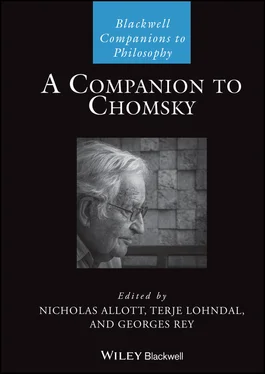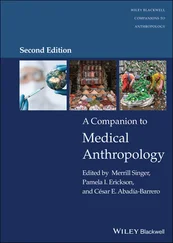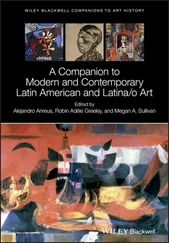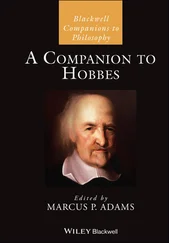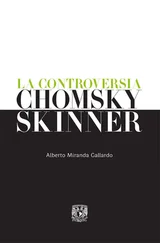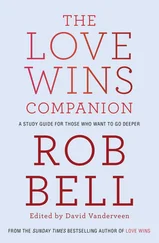A Companion to Chomsky
Здесь есть возможность читать онлайн «A Companion to Chomsky» — ознакомительный отрывок электронной книги совершенно бесплатно, а после прочтения отрывка купить полную версию. В некоторых случаях можно слушать аудио, скачать через торрент в формате fb2 и присутствует краткое содержание. Жанр: unrecognised, на английском языке. Описание произведения, (предисловие) а так же отзывы посетителей доступны на портале библиотеки ЛибКат.
- Название:A Companion to Chomsky
- Автор:
- Жанр:
- Год:неизвестен
- ISBN:нет данных
- Рейтинг книги:3 / 5. Голосов: 1
-
Избранное:Добавить в избранное
- Отзывы:
-
Ваша оценка:
- 60
- 1
- 2
- 3
- 4
- 5
A Companion to Chomsky: краткое содержание, описание и аннотация
Предлагаем к чтению аннотацию, описание, краткое содержание или предисловие (зависит от того, что написал сам автор книги «A Companion to Chomsky»). Если вы не нашли необходимую информацию о книге — напишите в комментариях, мы постараемся отыскать её.
Companion
Companion
A Companion to Chomsky
A Companion to Chomsky — читать онлайн ознакомительный отрывок
Ниже представлен текст книги, разбитый по страницам. Система сохранения места последней прочитанной страницы, позволяет с удобством читать онлайн бесплатно книгу «A Companion to Chomsky», без необходимости каждый раз заново искать на чём Вы остановились. Поставьте закладку, и сможете в любой момент перейти на страницу, на которой закончили чтение.
Интервал:
Закладка:
So this poor blind child who can't see should be slower in learning and should learn weird things. He should fail to learn some things; we didn't quite know what.
You can predict my first empiricist thought: The child could only learn words for things you could reach out and touch, because touching things has to be their way of getting information. This is what every empiricist should say: You're only going to learn words whose meaning you can get evidence for from the outside world, even though you're blind. So imagine our shock. This changed my whole life. Here's where I fell over the edge. The first verb in this kid's vocabulary was: see ! With look not far behind.
And just as advisors to the parents of deaf children had said, “Don't gesture to your child,” clinicians tell the parents of blind children, “Don't use words like look and see to your blind child, because that will lead to empty verbalism.” It's a technical word, verbalism . Why? Because, they say, look and see could have no meaning to the blind.
In fact, when Landau asked the blind child to “look up!”, the child raised her hands as if to explore, keeping her eyes and head immobile. This is in contrast even to blindfolded, sighted three‐year‐olds, who in response to the same command will raise their covered eyes skyward. This was a first demonstration (followed by corroborating evidence) that knowledge of sight‐related concepts is abstract rather than limited to the visual apparatus in particular, and that a blind three‐year‐old has means to discover this (Landau and Gleitman 1985). How could they have learned this? Our answer, as it evolved, turned out to be: They play The Great Verb Game, reverse‐engineering the meaning from the form. That is, it is the appearance of look and see with sentence complements ( Let's see if there's cheese in the refrigerator ) that informs the learner that look and see are terms of perception, not mere contact (one can't say or understand Let's touch if there's cheese in the refrigerator ).
7.3.3 Nicaraguan Sign Language: No Linguistic Input
Linguists, including particularly Anne Senghas (Senghas et al., 1997), had the opportunity (and, I might add, the wit) to look at a remarkable case of a language rising in a hithertofore‐isolated deaf community. These were children in the area of Managua, Nicaragua, brought together in a kind of informal deaf club. The result, as Senghas and her colleagues showed, was a constantly self‐enriching gestural system that in semantics and syntax embodied the elements of known natural languages, spoken and gesture.
I had the opportunity to work with Senghas, Goldin‐Meadow, and [Molly] Flaherty on studies of my favorite abstraction, symmetry (and its entailed cousin, reciprocity), in this population (L.R. Gleitman, S. Goldin‐Meadow, A. Senghas and M. Flaherty, {2019}). This work fed several of my obsessions at the same time. It was a new testbed in which an experience‐deprived user population showed how abstractions like symmetry and reciprocity arise under untutored conditions, and how this delicate formal distinction is reflected in the emerging syntax of their language.
Even the very first user‐inventors of this sign language formally distinguished between symmetrical predication ( Juan and Carlos high‐five ) and reciprocal predications ( Juan and Carlos punch each other ). Just like English speakers, these untutored children treat the symmetric predicate high‐five as an intransitive verb, with the conjoined Juan and Carlos viewed as a single collective subject argument whose parts are symmetrically involved in the action. In the Nicaraguan Sign Language equivalent for reciprocal Juan and Carlos punch each other , one finds JUAN CARLOS PUNCH–GET PUNCHED CARLOS JUAN PUNCH–GET PUNCHED, where the serial verb construction PUNCH–GET PUNCHED encodes a transitive action with two animate participants, agent and patient. The reciprocal construction puts two such clauses together, with participant order reversed, describing the two reciprocal events.
Remember, there was no input that accounts for this knowledge. I take this and the many related findings from Nicaraguan Sign Language to be the most compelling evidence for the robustness of the human language learning function to differences in external experience.
7.4 Syntactic Bootstrapping: Verbs of a Feather Flock Together
Coming from the work on the blind child, I had another interesting experience. I said to Henry Gleitman, one of the most thoughtful people I know, “Look! So much for your empiricist ideas! A blind child understands the meaning of the words look and see .” He says, “Well, that's really fantastic. How did she learn them?”
I said, “Heh. You and your—. I don't have to answer that question, really, it's—.” And then I thought, Uh‐oh. I decided to make a pilgrimage to Cambridge to visit Noam Chomsky, a person of an entirely different persuasion, and a friend of mine, of course, by that time. And maybe I'll get some help in thinking about this. I told Chomsky, “The first verbs in a blind child's vocabulary include look and see !” He says, “Wow! That's fantastic! How did she learn them?”
Oh my God. When Henry Gleitman and Noam Chomsky are asking me the same question I'm really, really in trouble. Noam says to me, “Well, it couldn't have been by magic!”
There are a number of questions that really have to be asked at this point. Where did the kid come up with the concept of looking? How do you know that the word look is the word for looking – which is approximately “apprehend” despite the fact that its usage, for the blind, requires touching? What led the blind three‐year‐old to distinguish looking and touching?
That's when my memories as a linguist, and conversations with Barbara Landau, brought back “chains of transformations” and The Great Verb Game. If you can't learn the meaning of see by seeing, perhaps its sense reveals itself in the syntactic structures it licenses. This hypothesis turns on the following idea. If sentence structures are projected from their semantics, then to some extent the semantics itself may be recoverable from the observed surface syntactic forms. Just Harris's position! In fact, such a theory may not be merely a fallback used by the sensorily deprived, but a general clue to the acquisition of word meanings, for almost every word is abstract and mind‐driven and requires more than observation of the world to understand.
Indeed, we discovered that the verbs of cognition and perception as used by the mother to her blind child crucially included sentence complements such as Let's see if there's cheese in the refrigerator . In contrast, Let's touch if there's cheese in the refrigerator never occurred. And it's by using this information that the congenitally blind child learns to “see.”
That's basically the answer. You could now reverse‐engineer it. That is, if you knew about how languages must map from semantics to syntax, and somebody gave you the syntax, you ought to be able to reconstruct something about the semantics, down to some level.
And that's what we called “syntactic bootstrapping,” a term which I invented to mock my good friend Steve Pinker's “semantic bootstrapping” (Pinker 1984). Pinker, who was right in many ways, was saying that you can acquire the syntactic structures by understanding the semantics. But everything I was doing was saying you can't, because that semantics business that he thinks you should have first isn't so easy. While Pinker's premise was false in part, there's something deep in his work about how the syntax–semantics correspondence can help you learn semantics. We get the main clues from what we learned from the deaf and the blind – that you can exploit that correspondence from the other end. At the point where verb learning is going on, enough syntax is accessible for the child to perceive. And from that, if you're a creature endowed in a certain way by nature, you can make a very good guess about the semantics of the verb in a sentence.
Читать дальшеИнтервал:
Закладка:
Похожие книги на «A Companion to Chomsky»
Представляем Вашему вниманию похожие книги на «A Companion to Chomsky» списком для выбора. Мы отобрали схожую по названию и смыслу литературу в надежде предоставить читателям больше вариантов отыскать новые, интересные, ещё непрочитанные произведения.
Обсуждение, отзывы о книге «A Companion to Chomsky» и просто собственные мнения читателей. Оставьте ваши комментарии, напишите, что Вы думаете о произведении, его смысле или главных героях. Укажите что конкретно понравилось, а что нет, и почему Вы так считаете.
